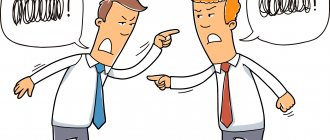Have you noticed that recently the field of work requires more and more professionals in their field? Amateurs with superficial knowledge and skills are moving into second place, while deep specialization, constant growth and development in their direction acquire a new qualitative meaning. Great competition, lack of basic knowledge, desire for development, acquisition of new competencies within a particular type of activity - these are what are important today. But let's think: how can this manifest itself on an individual, how does it affect her psychological state, and what consequences does such a professional policy lead to?
Have you ever had the experience of a parent or spouse leaving a professional image when they get home? The doctor still will not forget about the patients lying in the wards, and when a child has a slight cough, he heals it; the teacher continues to teach his relatives something useful; a psychologist tries to analyze the behavior of his family members; the policeman suspects all his acquaintances and household members of “dark dealings,” etc. If this happened, then you are faced with professional deformation, which will be discussed in this article.
Professional deformation can happen to every person, therefore, in order to be able to control yourself, we suggest you take our online program “Mental Self-Regulation”, where in 6 weeks you will be able to acquire the most important skills - the ability to cope with stress at work and at home, fight apathy and irritation, and the main thing is to control your emotions.
And before we move on to the main material, we suggest you check now how well you know the topic of professional deformation:
Now let's get started.
Types of professional deformation
There are several main types of personality changes:
- General professional. This includes excessive manifestations of the characteristics of the specialty in everyday life. For example, police officers describe this type as the perception of everyone they meet as a potential attacker.
- Individual. They are determined by personality characteristics, and not by professional activity. They represent the development of a person’s inclinations in fertile soil in the form of the characteristics of the work he performs. This creates excessive responsibility for accountants.
- Typological. They are formed by the fusion of professional and personal qualities. For example, they manifest themselves in the development of organizational abilities while working as a primary school teacher. In a positive way, they manifest themselves in the ability to quickly plan any event. With a negative course of deformation, an excessive love of commanding other people as one’s own students is possible.
In each case, occupational deformation depends on the type of work and the time spent on it.
Prevention of occupational deformities
The best prevention of professional deformations is the ability to separate work and personal life. You shouldn’t drag reports and telephone conversations into your kitchen. If your profession requires training at home, set up a separate workplace. When you get up from your desk, stop mentally continuing to solve business problems.
Leisure planning also plays a huge role. Switching attention, changing the environment and type of activity has a beneficial effect
It is important to come up with a hobby that is far from your main occupation. In addition, skill decompensation will have a beneficial effect
As a leader, sometimes allow family members to make choices for you at home and compromise more often.
Connection with the profession
The most susceptible to occupational deformation are those who work with people, for example: law enforcement officers, military personnel, managers, deputies, officials, social workers, teachers, doctors, psychiatrists, salespeople, and psychologists themselves. For them, professional deformation can be expressed in a formal, functional attitude towards people. Both in the sphere of socionomic professions and in technical professions, professional deformations are expressed differently depending on the specific profession: for teachers - in authoritarianism and categorical judgments; among psychologists and psychotherapists - in an effort to manipulate another person, to impose a certain picture of the world, without taking into account the motives and goals of the person himself; among programmers, there is a tendency to look for errors in various life situations, a tendency towards algorithmization.
For managers, professional deformation can manifest itself as an increase in aggressiveness, inadequacy in the perception of people and situations, leading to a decrease (or loss) in the ability to communicate effectively, self-improvement, development, up to a loss of taste for life.
The same thing happens in creative professions, as illustrators Sergei Tyunin and Andrei Bilzho noted that many writers categorically do not accept the genre of caricature, since they are “men of their words”:
Examples of manifestation
Let's look at several striking signs of the development of professional deformation in representatives of different professions.
| Profession | Manifestation of professional deformation |
| Doctor | Close attention to manifestations of ill health in people around him, a constant desire to discuss illnesses and give medical advice without asking |
| Teacher | Intolerance for other people's mistakes and displays of ignorance. Thus, a teacher of Russian language and literature can constantly correct mistakes in the interlocutor’s speech |
| Driver | Finding himself in the role of a passenger, a professional driver tries to give instructions and comment on the driving style of the person who is currently behind the wheel. |
| Sales Manager | Constantly talking about the products and services he sells. The desire to turn everyone you know into clients |
| Stylist | Critically evaluates the appearance of people around him, constantly makes comments about the dressing style of his acquaintances, and gives advice |
| Programmer | When visiting various sites, he evaluates them for the quality of their development. Marks errors and omissions |
Vocational rehabilitation
There are several possible rehabilitation options, including the following:
- completing training for qualifications and personal growth;
- increasing the level of autocompetence and socio-psychological competence;
- completing advanced training courses and transferring to a new position;
- diagnostics of professional personality changes and development of individual schemes for their correction;
- studying methods and techniques for self-correction of professional changes and self-regulation of emotional and volitional qualities;
- preventive measures for professional maladaptation of an inexperienced specialist;
- development of alternative methods for further professional and personal growth.
Minuses
- Arrogance - develops in case of promotion, especially if the new position involves power.
- Jam. A person stops developing and strives to learn more about his profession, which is why he becomes ineffective and unable to create and implement new creative ideas.
- Destruction of relationships. Friends, family partners and just acquaintances who know one person cannot stand his dramatic changes. Just imagine, the head of a large department, coming home and, without leaving his role, tries to manage his wife and children, giving them instructions and reprimanding them for their mistakes, how long will they be able to see him as a loving father and caring husband?
- Psychological barriers that protect the psyche do not hold up, which is why so-called burnout occurs. A person becomes disillusioned with his work, experiences fatigue, a persistent aversion to it, and loses the meaning of life. And all because I didn’t have any space or opportunity to take a break from my role, to notice myself in other images and to realize that I really am a multifaceted, versatile personality. It just becomes boring, especially if you had to do the same thing day after day.
- Efficiency and productivity are reduced. Trembling and interest in one’s activities disappears without a trace. And then doctors begin to treat patients as faceless and soulless, and managers begin to treat employees as functions that need to be either adjusted or disqualified.
What is professional deformation
The concept of professional personality deformation was first used by sociologist Pitirim Sorokin back in the last century.
He noticed this phenomenon while studying the work of teachers. This is where the study of changes provoked by long periods of work in one place began.
Professional deformation - what is it? This is the transfer of professional skills into everyday life. During its development, there is a significant change in personal qualities that develop as a result of prolonged performance of stereotypical work duties. Peculiarities of perception and behavior and even human values are touched upon.
Main reasons for development
Occupational deformations have a number of causes. The key among them is prolonged stagnation (stagnation of growth). It occurs when a person reaches certain heights in work activity and stops moving forward to something new. Can develop in any job involving repetitive activities. Even the most prestigious positions do not save us from the onset of stagnation. Therefore, professional deformation of a leader’s personality is not uncommon.
Other factors of professional deformation:
- continuous monotonous work;
- regular stressful or conflict situations;
- increased levels of nervousness or fatigue;
- lack of prospects for further professional growth;
- regular excessive workload in the workplace.
It takes some time for psychological professional deformation to develop. But there are two reasons for its appearance at a young age:
- A novice worker has high expectations regarding the profession. Disappointed, he gives up and switches to uninitiated fulfillment of obligations. Not accompanied by a creative approach and variety of actions, it quickly leaves its mark on the personality.
- A young specialist does not choose an activity because of its characteristic features. He is guided by other motives. This may be a desire to achieve power or to prove one’s social significance to someone. Therefore, a person treats the actions performed without interest, does not develop and quickly falls under the processes of deformation.
Professionals at risk
- Teachers
During their work, teachers develop an appropriate manner of communication. As a rule, they speak edifyingly, as in a lesson. However, this is not the entire list. They often show maximum responsibility for the behavior of others, try to take everything under their control, clearly plan their time and try to build a hierarchy in communicating with others. They can be conservative, it is difficult to agree with creative impulses. Bright potential and innovation make them anxious.
Raising teenagers is only possible if a period of professional burnout has not occurred. The Japanese are of the following opinion: after 10 years of work, teachers can no longer teach children. Of course, such a conclusion can be refuted. Even being “aged,” a person can remain an adequate teacher.
- Accountants
Indicators of professional deformation among accountants can also be found. As a rule, they try to organize the space around them and the world as a whole, put everything “on shelves”, structure it into lists, checklists. The main points are similar to the criteria for professional deformation among teachers, namely the desire to control everything and plan. Sometimes such people experience “excellent student syndrome”: they are afraid to go beyond what is permitted not only in work, but also in life.
Accountant
- Doctors
Doctors are no exception either. They are also susceptible to factors of professional deformation. They are often expressed in the desire to quickly assess a person’s level of health. When they shake the other person's hand, they evaluate the pulse, the quality of the skin, and the possible temperature.
By the way, doctors can be quite cynical. This has nothing to do with character. The fact is that they often encounter unpleasant situations, they have a lot of responsibility, and their work is associated with salvation. In this situation, “dark” humor and cold reason come to the rescue. Only this allows you to preserve nerve cells and react to everything calmer.
Notes
- Granovskaya R. M.
Elements of practical psychology. - 6th. - St. Petersburg: Rech, 2010. - 560 p. - ↑
- Psychology of professionalism // Markova A.K. “Knowledge”, 1996
- Channel “Culture”, program “Observer” from 09.20.2012 (see from 38.40), artist Sergei Tyunin.
- Definition of "administrative delight" in Wiktionary
- Rogov E.I.
Personality in teaching activities. - Monograph. - Rostov-on-Don: Rostov Pedagogical University, 1994. - 340 p. - Rogov E.I.
Psychology of the formation of professionalism. - monograph. - Rostov-on-Don: Southern Federal University, 2016. - 340 p. — ISBN 978-5-9275-1931-6. - Druzhilov S.A.
Professional deformations and destruction as a consequence of distortion of psychological models of profession and activity // Journal of Applied Psychology. - 2004. - No. 3. - P. 56-62. - Druzhilov S.A.
Professionally destructive activity as a manifestation of professional marginalization and deprofessionalization // Bulletin of Moscow University. Episode 14: Psychology. - 2022. - No. 2. - P. 45-63.
Causes
One of the most common causes of professional deformation, according to experts, is the specifics of the immediate environment with which a professional specialist is forced to communicate, as well as the specifics of his activities. Another equally important reason for professional deformation is the division of labor and the increasingly narrow specialization of professionals. Daily work, over many years, to solve standard problems not only improves professional knowledge, but also forms professional habits, stereotypes, determines the style of thinking and communication styles.. In the psychological literature, three groups of factors leading to the occurrence of professional deformation are distinguished: factors, conditioned by the specifics of the activity, factors of a personal nature, factors of a socio-psychological nature
In the psychological literature, three groups of factors leading to the occurrence of professional deformation are distinguished: factors determined by the specifics of the activity, factors of a personal nature, factors of a socio-psychological nature.
Stereotypes
- The stereotype “a boss must be tough-skinned, firm, persistent” changes the structure of managerial interaction, transferring it to a mode of threat of punishment for misconduct, orderly communication.
- The stereotype “the boss is always right” negatively affects the employee’s independence of decisions and judgments, creates lack of initiative, and expectation of orders and instructions from management.
- The stereotype of dogmatic adherence to orders gives rise to an attitude of mindlessly following any order from the boss, often leading to intrapersonal conflicts if one has one’s own opinion about the need to act differently.
- The stereotype of the “little man” leads to a decrease in professional self-esteem, the manifestation of conformity and the absence of one’s own judgments on this or that official issue.
- The stereotype of “optimal” role behavior often acts as a mechanism of adaptive behavior to certain work situations and specific professional actions. Thus, threatening and aggressive behavior is considered as optimal for obtaining evidence from a suspect, etc.
- The stereotype of “finding the culprit” justifies all actions to find the culprit, punish him, etc. At the same time, work to identify the true causes of ineffective activity fades into the background, and its shortcomings are not revealed.
In general, non-professional usage, the term professional deformation
is used in a weaker sense, indicating (often ironically) only a certain influence of professional habits on people’s behavior in private life, the transfer of specifically professional stereotypes and attitudes to behavior outside of work.
Professional personality deformation
Professional personality deformation is a change in the perception of personality stereotypes, methods of communication, behavior, as well as character, which occurs under the influence of prolonged professional activity. Which professions are more susceptible to professional personality deformation? First of all, these are representatives of those professions whose work is related to people - managers, personnel workers, psychologists, teachers and officials. Workers in the medical and military spheres, as well as employees of special services, are slightly less susceptible to professional personality deformation.
Professional deformation of employees can be stable or episodic, positive or negative, and also have a superficial or global nature. As a rule, it manifests itself not only in demeanor and jargon, but also in a person’s appearance.
pros
- Due to the fact that every day one has to “enter” the role assumed by the profession, deformation allows a person to quickly adapt to it.
- Protects the psyche. Just imagine what would happen to, say, pediatric intensive care doctors if they had not learned to “freeze” their feelings towards young patients, acquiring certain tough character traits and losing the skill of empathy and compassion? While crying over one child, they would not be able to save the lives of others, because they would experience extreme grief and pain. And every day, observing dozens of sick, sometimes terminally, children, they could lose their minds, having lasted only a short time at work.
- It can be useful in everyday life, since some skills can be applied not only in the workspace. Let’s say that individuals with medical education can provide first aid to loved ones in case of unforeseen circumstances, masters of sports in martial arts will protect the family, and PR managers will organize an unforgettable holiday for the child.
How to determine the approach of professional deformation
The approach of deforming changes in the psyche associated with work activity can be determined by the following factors:
- You are afraid of losing communication with colleagues, your profession, your job.
- All your conversations ultimately come down to discussing work issues.
- Your family and friends find you difficult to deal with.
- You associate your success only with your professional activities.
- Your social circle is limited only to your colleagues.
- You do not allow yourself and your colleagues to show emotions and express their experiences in the workplace.
- You are often told that a conversation with you is reminiscent of a conversation with a doctor (lawyer, investigator, teacher, etc.), since in ordinary life you begin to communicate in professional language.
- Your interests are limited only to your professional activities.
- You treat your acquaintances as objects of your profession.
Signs of occupational deformation
Let's figure out what professional deformation is expressed in. There are several of its characteristic features that are characteristic of representatives of any profession.
- Limited area of interest
A person with occupational deformation is not interested in anything except issues related to his profession. Even if he used to have some exciting hobbies, over time they fade into the background and cease to bring pleasure. A person begins to consider them a waste of time.
- Desire to communicate only with colleagues
This sign is a direct consequence of the previous one. Gradually, a person’s social circle narrows to people who work with him in the same field. He becomes uninterested in communicating with anyone else, because he only wants to discuss work issues.
- Fear of job loss
A person becomes so accustomed to his work position that he cannot imagine himself outside of it. He begins to fear the hypothetical possibility of losing his job, even if there are no prerequisites for this. It is difficult for him to imagine himself in another workplace in another company. This prospect seems to him almost the end of the world.
- Elevating your profession above others
A person with occupational deformation is characterized by a certain snobbery towards workers in other fields. It seems to him that his work is of exceptional importance and value. The contribution of other professions to achieving the public good is downplayed.
- Exaggerating your merits
A person’s own achievements and merits seem more significant than the achievements of colleagues. He begins to look down on them and consider himself the most valuable employee.
- Deterioration of relationships with loved ones
Professional snobbery, the use of work slang, frequent advice and an expert tone - all this cannot but affect communication with others. Often close people in response to such behavior close themselves and try to reduce contacts.










